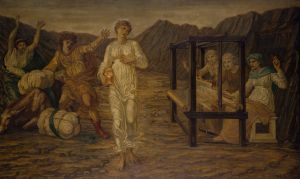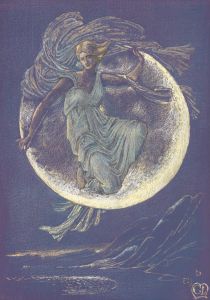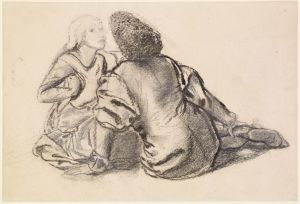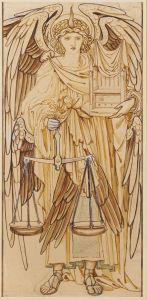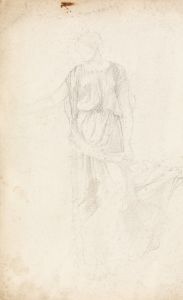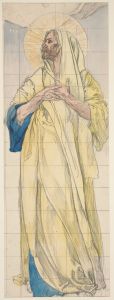
The Gates Of Dawn
A hand-painted replica of Herbert James Draper’s masterpiece The Gates Of Dawn, meticulously crafted by professional artists to capture the true essence of the original. Each piece is created with museum-quality canvas and rare mineral pigments, carefully painted by experienced artists with delicate brushstrokes and rich, layered colors to perfectly recreate the texture of the original artwork. Unlike machine-printed reproductions, this hand-painted version brings the painting to life, infused with the artist’s emotions and skill in every stroke. Whether for personal collection or home decoration, it instantly elevates the artistic atmosphere of any space.
Herbert James Draper was a prominent English painter, known for his classicist style and mythological themes. Born in 1863, Draper was part of the late Victorian era of art, a period that saw a resurgence of interest in classical antiquity and mythology. His works often depicted scenes from Greek mythology, characterized by their romanticism and attention to detail.
"The Gates of Dawn" is one of Draper's notable works, although specific details about the painting, such as its creation date or current location, are not widely documented. Draper's oeuvre typically includes themes of mythology, and it is likely that "The Gates of Dawn" follows this pattern, potentially drawing inspiration from mythological or allegorical sources. Draper's paintings are known for their dramatic use of light and shadow, as well as their rich color palettes, which bring a sense of life and movement to his subjects.
Draper's technique was heavily influenced by the Pre-Raphaelite Brotherhood and the Aesthetic Movement, both of which emphasized beauty and detail. His education at the Royal Academy of Arts in London provided him with a strong foundation in classical techniques, which he applied to his mythological subjects. Draper's ability to blend classical themes with a romantic style made his work popular during his lifetime.
While specific information about "The Gates of Dawn" is limited, Draper's other works often feature figures from mythology, such as nymphs, sirens, and gods, depicted in lush, natural settings. His paintings frequently explore themes of beauty, nature, and the divine, inviting viewers to immerse themselves in the mythological worlds he created.
Draper's career was marked by several successes, including exhibitions at the Royal Academy and other prestigious venues. His work was well-received by both critics and the public, and he was awarded several medals and honors throughout his career. Despite the changing tastes in art during the early 20th century, Draper's work remained popular, and he continued to paint until his death in 1920.
Today, Draper's paintings are held in various collections around the world, and his work continues to be appreciated for its technical skill and imaginative compositions. While "The Gates of Dawn" may not be as widely recognized as some of his other works, it undoubtedly reflects Draper's mastery of mythological themes and his ability to capture the ethereal beauty of his subjects.
In summary, Herbert James Draper's "The Gates of Dawn" is a testament to his skill as a painter and his fascination with mythological themes. Although specific details about the painting are scarce, it likely embodies the qualities that define Draper's work: a blend of classical inspiration, romantic style, and meticulous attention to detail.





